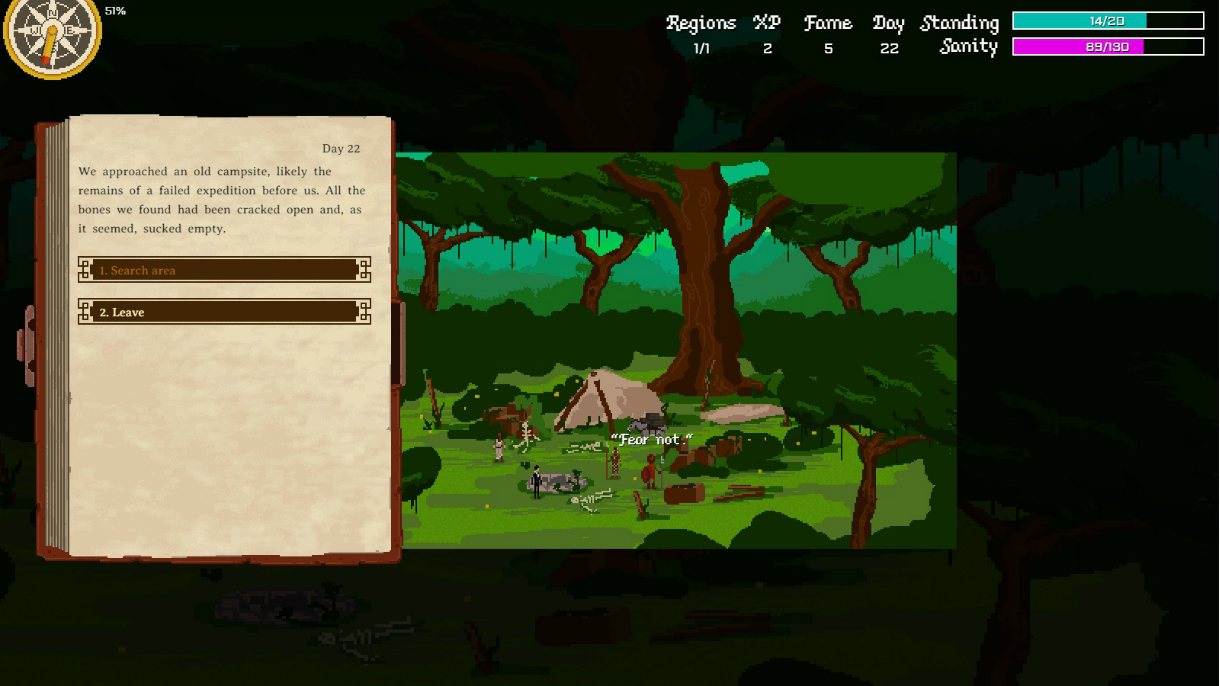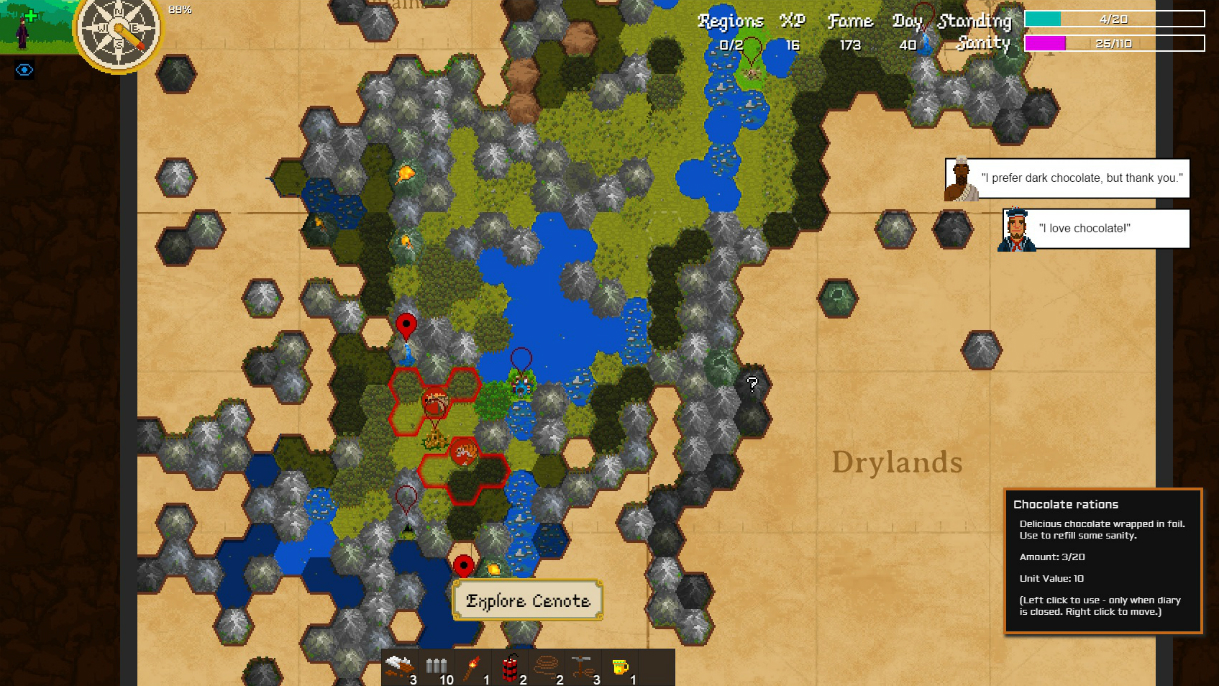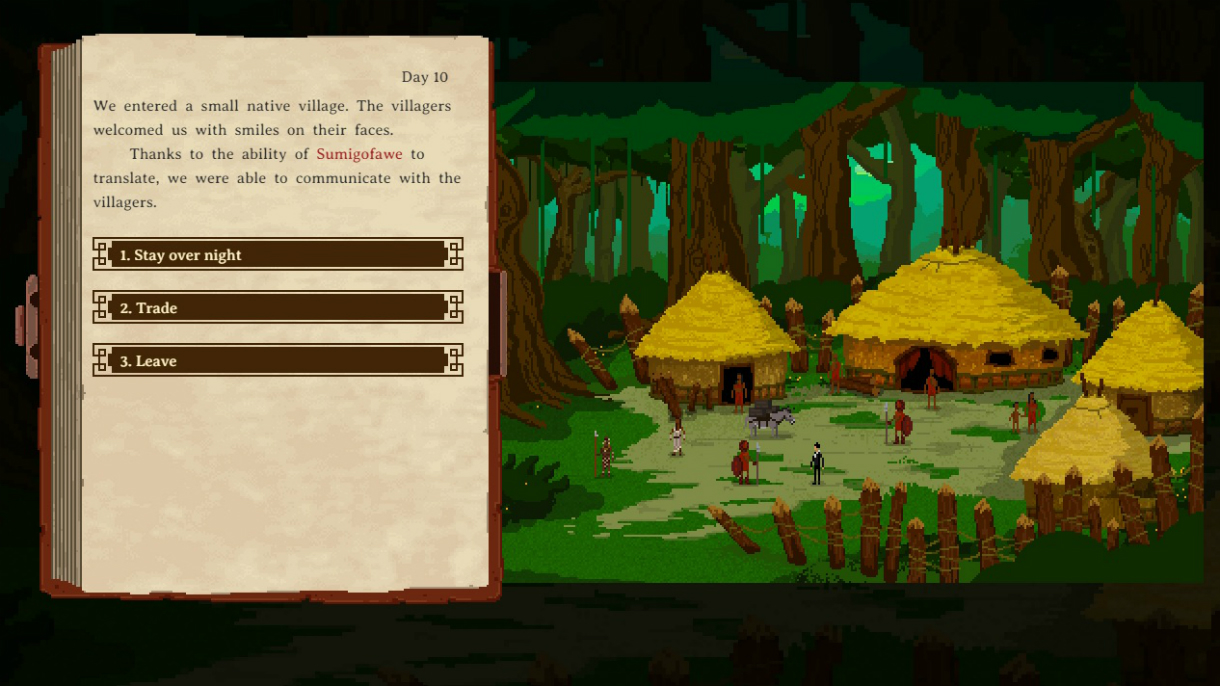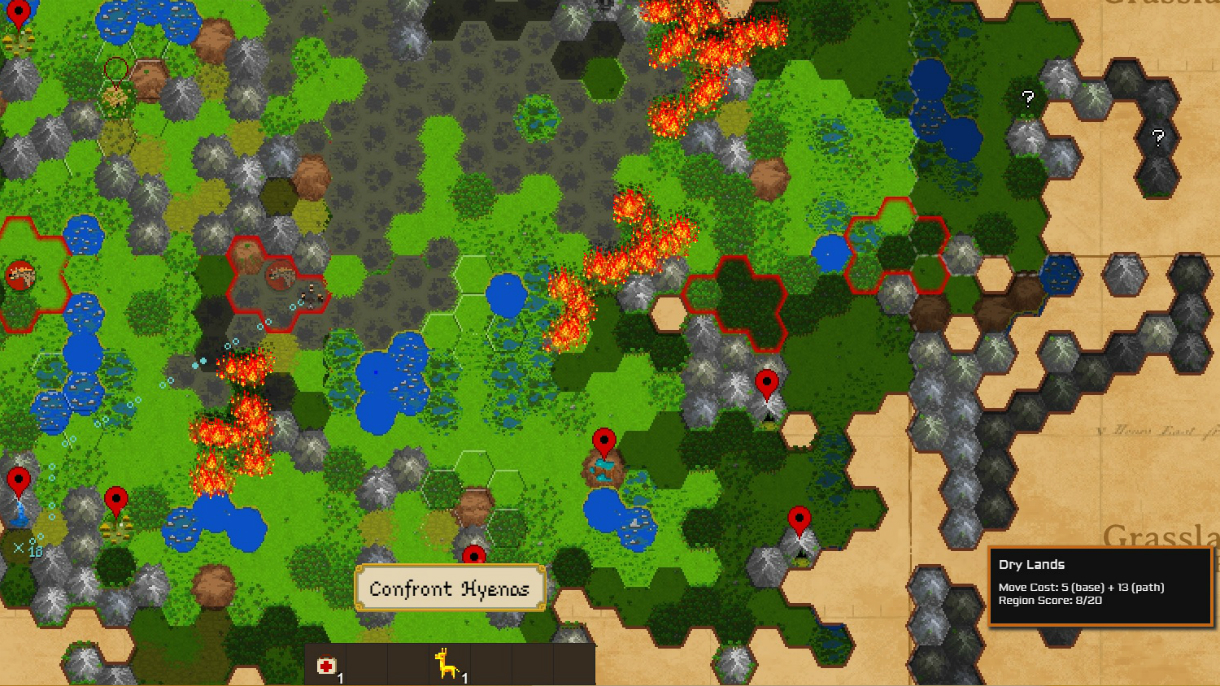The Curious Expedition hands-on: Harriet Tubman vs mountains

Tensions are high on my east African expedition. In these unfriendly wilds, the reverend Archibald Hosking turns to drink to pick up his spirits and, perhaps, to bring himself closer to his faraway god. Donald MacDougall, our Scottish mercenary, has shown himself to be a superstitious coward, terrified of ancient ruins and cryptic carvings. Of course, none of this is being helped by the cavalier attitude of the expedition leader, Ms. Harriet Tubman, who has taken to dynamiting mountains for fun.
“Boom! Take this, nature!” yells Harriet, world-famous abolitionist and hero of the underground railroad. The local populace scowls at the destruction of their sacred mountain. Mr. Moses, the expedition’s pack-bearing donkey, chooses that moment to run away with all of the food.
Heart of Darkness
The Curious Expedition is an upcoming roguelike (an alpha will be out soon) set in a fictionalized 19th-century heyday of exploration. The game is ostensibly about plundering treasure and discovering new lands, but its systems are equally concerned with illustrating the systemic abuse and subjugation of indigenous peoples common to the colonial and exploration eras. It’s a heady, compelling setting headlined by heroic figures of antiquity like Charles Darwin and Nikola Tesla.
The basic rules are simple enough: a famous leader and a selection of comrades pick their gear and head out into a randomly generated New World. Somewhere in the blank, hex-grid vellum map sits a golden pyramid. If they find it, fame and riches are theirs. Otherwise, they wander the wilderness, insane and hungry, until they die.

The full spread of overlapping systems are what makes Curious Expedition such a promising game. Each day spent traveling saps your expedition’s sanity; when you run out, that trek is over. Resting in a friendly village or beside a picturesque waterfall can restore sanity, as can taking a shot of whiskey or having an extra ration of chocolate.
The other precious resource is your reputation with the local people. The best way to stay on their good side is to follow the Boy Scouts camping rule: leave no trace. The more you accidentally start brush fires or dynamite ancient mountain passes, the more you upset the equilibrium of this unexplored continent. It’s easy to spend less time fretting over this stat than the all-important sanity meter, but disregarding it can mess up your day. I once ignored my low reputation and plundered an ancient shrine for a golden skull. When I emerged, the ground shook and volcanic rifts appeared everywhere as the gods themselves expressed their disgust. The entire continent burned.
Help Wanted
The addictive hook of Curious Expedition is the way it uses characters as upgradable sub-systems. Where you might, say, upgrade your shields in FTL to avoid damage, hiring a native warrior will reduce your chances of triggering combat. Where you might specialize in Master of Arms in Dungeons of Dredmore for greater ass-kicking skills, leading an expedition as big-game-hunter (and giant-rifle-wielder) Frederick Courteney Selous will help you blow through undiscovered country in a straight line, killing everything in your way. Both are equally valid ways to approach the task of discovery.
The biggest gaming news, reviews and hardware deals
Keep up to date with the most important stories and the best deals, as picked by the PC Gamer team.

The variety of options here is above most roguelikes and growing, and it can get overwhelming at times. There are fifteen leaders to choose from, eleven hireable party members, and two dozen or so equippable items. All of this gear and these explorers modify the effectiveness of your strategies and safeguards, which gives me thousands of possible strategic approaches. It’s kind of a shame that one of the ways Curious Expedition is unfinished is its gear descriptions and tutorials. The only way to discover the use of certain items, then, is to buy them, ship them across the ocean, and entrust your life to them in hostile territory.
It’s not ideal, but I guess the worst thing that can happen is an untimely death. Repeated failure is part of the experience, afterall, and the bleached bones of my failed expeditions pave a road from here to the Natural History Museum of your choice. Failure in Curious Expedition is brutal and heartbreaking, but the next life is a couple of clicks away.
Ancient Wonders
Curious Expedition still has a way to go after it begins its paid alpha on November 27. For one thing, some of the background art panels are still crude placeholders—a jarring departure from the otherwise spectacular pixel art seen elsewhere. Many of CE’s random encounters repeat too frequently, something that I hope will ease off a bit when the game is finished.
Combat is also a pretty shallow experience at the moment, as skill checks haven’t been implemented yet. Encounters (most frequently with wild animals) boil down to a binary choice: run away, or accept a couple of minor casualties in exchange for hides and animal meat. It’s not a bad compromise, but it does take some of the fun out of playing a badass game hunter.

Curious Expedition is built in HTML5, which means it plays in-browser with no special plug-ins. The program opens quickly, loads instantly, and animates smoothly. If this were a Steam Early Access game, in other words, I’d have nothing negative to say about its performance. The developers told me they do plan to offer an offline, downloadable version of the game and won’t rule out a Steam release, but it’s not their first priority.
Curious Expedition’s paid alpha release gets started on November 27. The full release, with more units, terrains, and encounters, is planned for July 2015.

